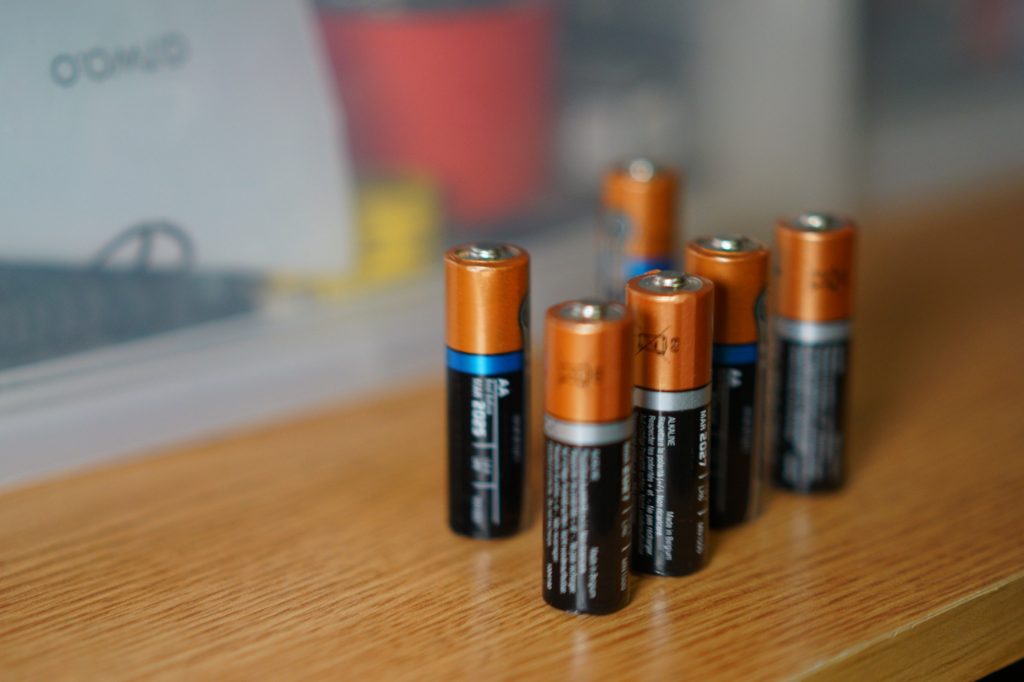Batteries have become essential to our daily lives, powering our devices and vehicles. But have you ever wondered how they work? How does a battery store energy and release it when needed? In this article, we will explore the science behind energy storage and learn about the different types of batteries and their functioning.

The Basics of Batteries
A battery is a device that stores energy and releases it as electricity. It consists of two electrodes, an anode and a cathode, separated by an electrolyte. When a battery is connected to a circuit, electrons flow from the anode to the cathode, producing an electric current.
Types of Batteries
There are many different types of batteries, each with its unique characteristics and uses. Some of the most common types include:
- Alkaline batteries
- Lithium-ion batteries
- Lead-acid batteries
- Nickel-metal Hydride batteries
Alkaline Batteries
Alkaline batteries are the most commonly used batteries for household devices. They are affordable, long-lasting, and have a stable voltage output. They consist of an anode made of zinc, a cathode made of manganese dioxide, and an electrolyte made of potassium hydroxide.
Lithium-Ion Batteries
Lithium-ion batteries are widely used in laptops, smartphones, and electric vehicles. They have a high energy density, meaning they can store energy in a small space. They also have a low self-discharge rate, meaning they can hold their charge for a long. Lithium-ion batteries consist of a cathode made of lithium cobalt oxide, an anode made of graphite, and an electrolyte made of lithium salt.
Lead-Acid Batteries
Lead-acid batteries are commonly used in vehicles and backup power systems. They are durable, reliable, and have a long service life. Lead-acid batteries consist of lead plates in an electrolyte solution of sulfuric acid.
Nickel-Metal Hydride Batteries
Nickel-Metal Hydride batteries are similar to Lithium-Ion batteries, but they use a different cathode material, nickel-metal Hydride. They are commonly used in hybrid and electric vehicles.
How Does a Battery Work?
A battery works by storing chemical energy and converting it into electrical energy. When a battery is connected to a circuit, the electrons flow from the anode to the cathode, producing an electric current. The flow of electrons continues until the chemical energy in the battery is depleted.
The chemical reactions in a battery generate a voltage, which can be harnessed to power a device. The voltage produced by a battery depends on the type of battery and the materials used in its construction.
The Charging Process
When a battery is depleted, it can be recharged by reversing the flow of electrons. In other words, the charging process involves forcing electrons to flow back into the anode. This reaction restores the chemical balance in the battery, enabling it to store energy again.
The charging process must be carefully controlled to avoid overcharging or overheating the battery. Overcharging can cause the electrolyte to break down, reducing the battery’s capacity and shortening its service life.
Battery Capacity
Battery capacity refers to the amount of energy a battery can store. It is measured in milliampere-hours (mAh) or ampere-hours (Ah). The capacity of a battery determines how long it can power a device before it needs to be recharged.
Battery capacity also depends on the discharge rate, which is the rate at which the battery is drained of energy. A higher discharge rate means the battery will discharge faster, reducing capacity.
Battery Life
The life of a battery refers to the number of times it can be charged and discharged before it reaches the end of its useful life. Battery life is influenced by several factors, including:
- The type of battery
- The operating temperature
- The depth of discharge
- The charging and discharge rate
To extend the life of a battery, it is crucial to follow the manufacturer’s recommendations for charging and usage.
FAQs
- What is the difference between a primary and a secondary battery?
A primary battery is a disposable battery that can only be used once. A secondary battery, also known as a rechargeable battery, can be recharged and used multiple times.
- What is the most common type of battery used in household devices?
The alkaline battery is the most common type of battery used in household devices.
- Can a battery explode?
Yes, a battery can explode if damaged, overcharged, or overheated.
- How do I dispose of a battery?
It is essential to dispose of batteries properly to protect the environment and avoid potential safety hazards. Most batteries can be recycled, and many retailers offer battery recycling programs.
Conclusion
In conclusion, batteries play a vital role in powering our daily lives. By understanding how they work, we can make informed decisions about which type of battery to use and how to extend its life. Whether it’s alkaline batteries for household devices, lithium-ion batteries for laptops and smartphones, or lead-acid batteries for vehicles, the science behind energy storage is crucial for our modern world. So the next time you use a battery, take a moment to think about the complex process that makes it possible. How does a battery work? It’s a fascinating question that will continue to be explored as technology advances.













